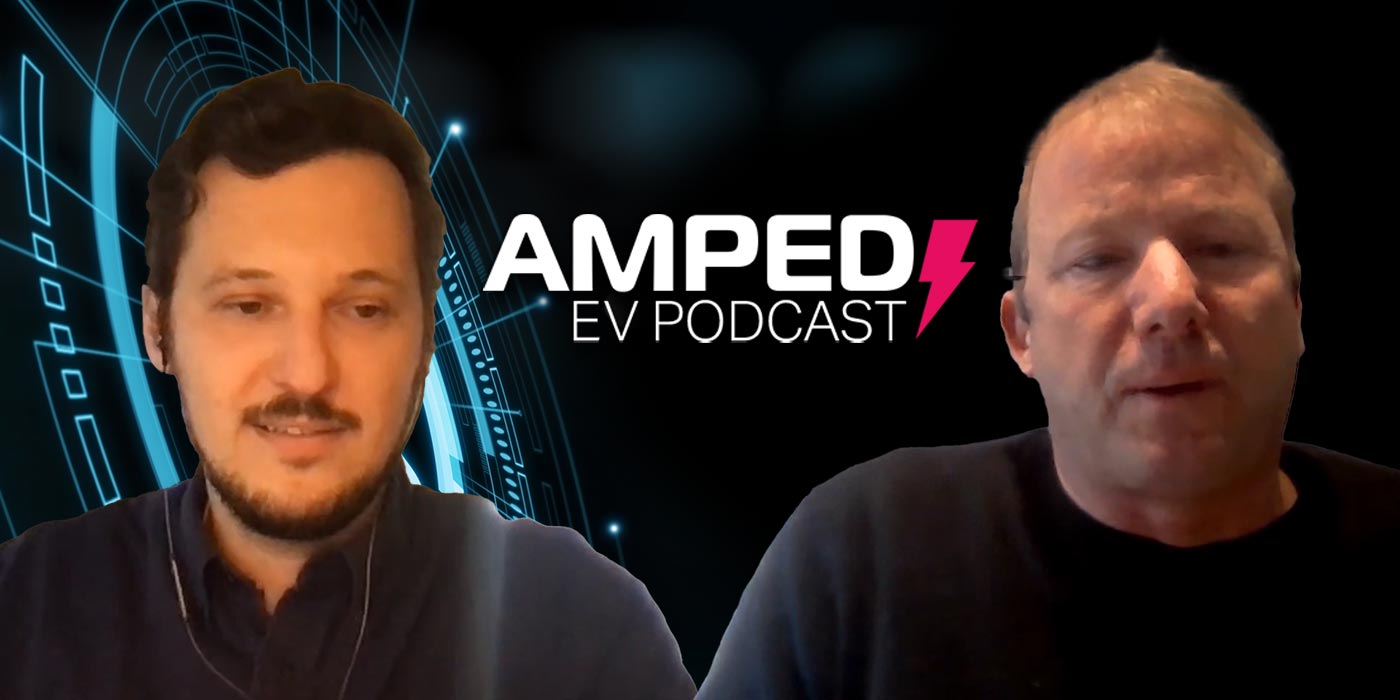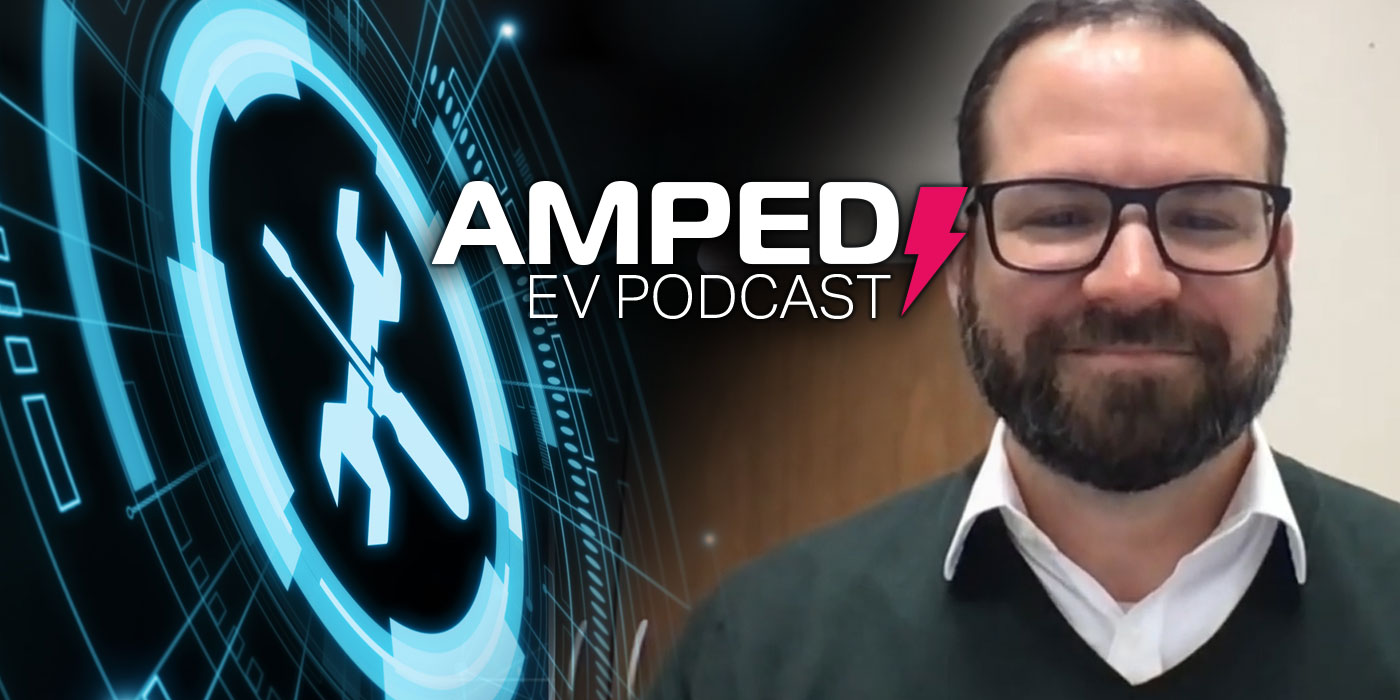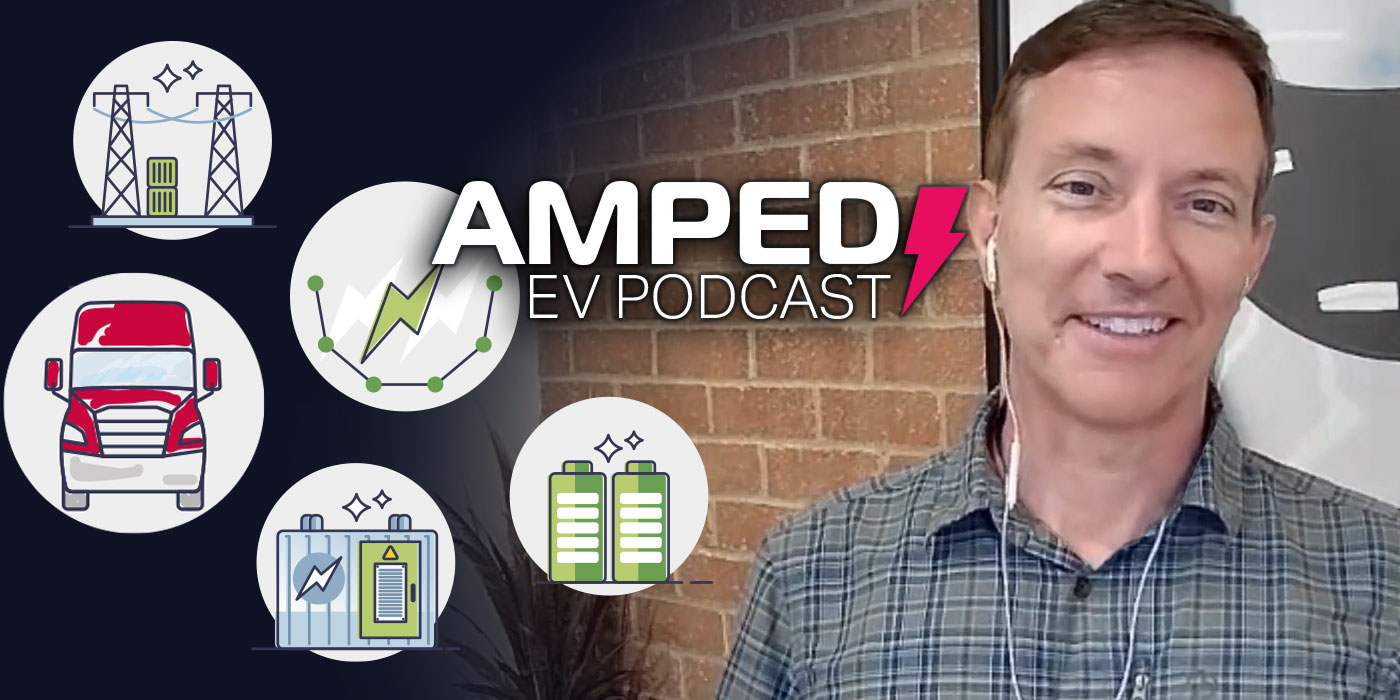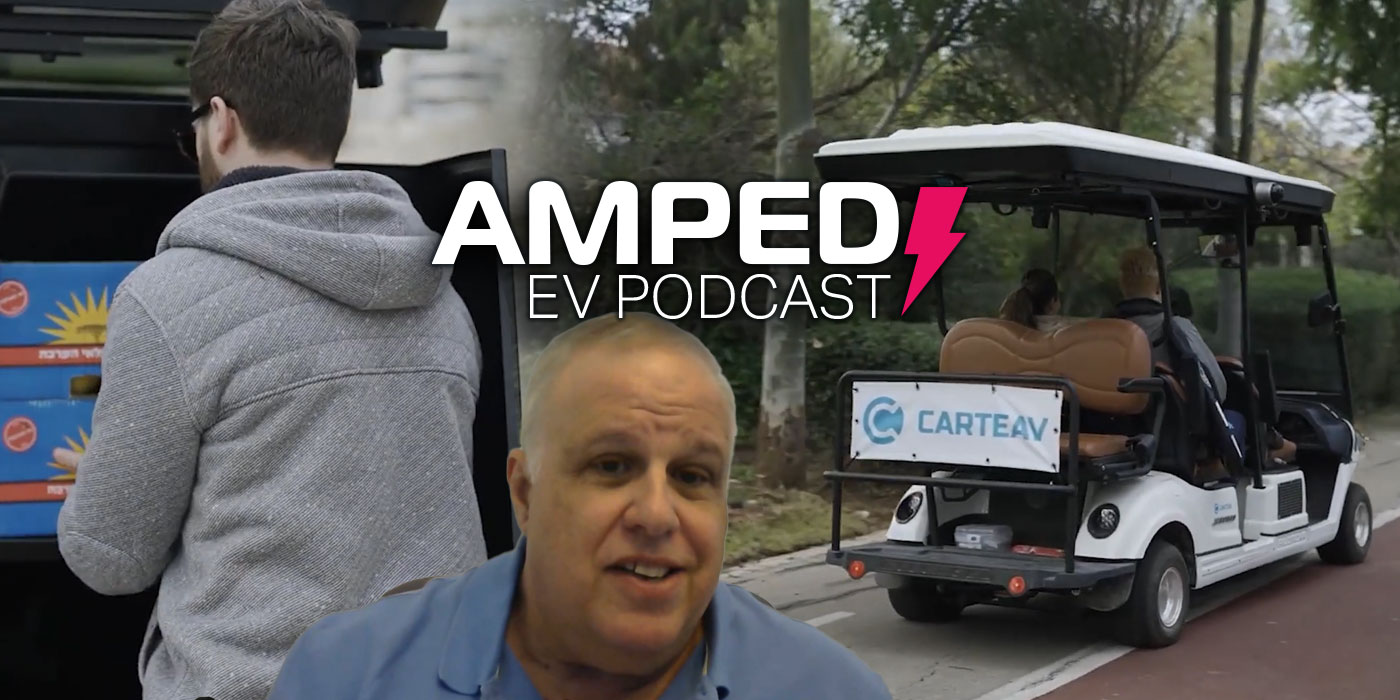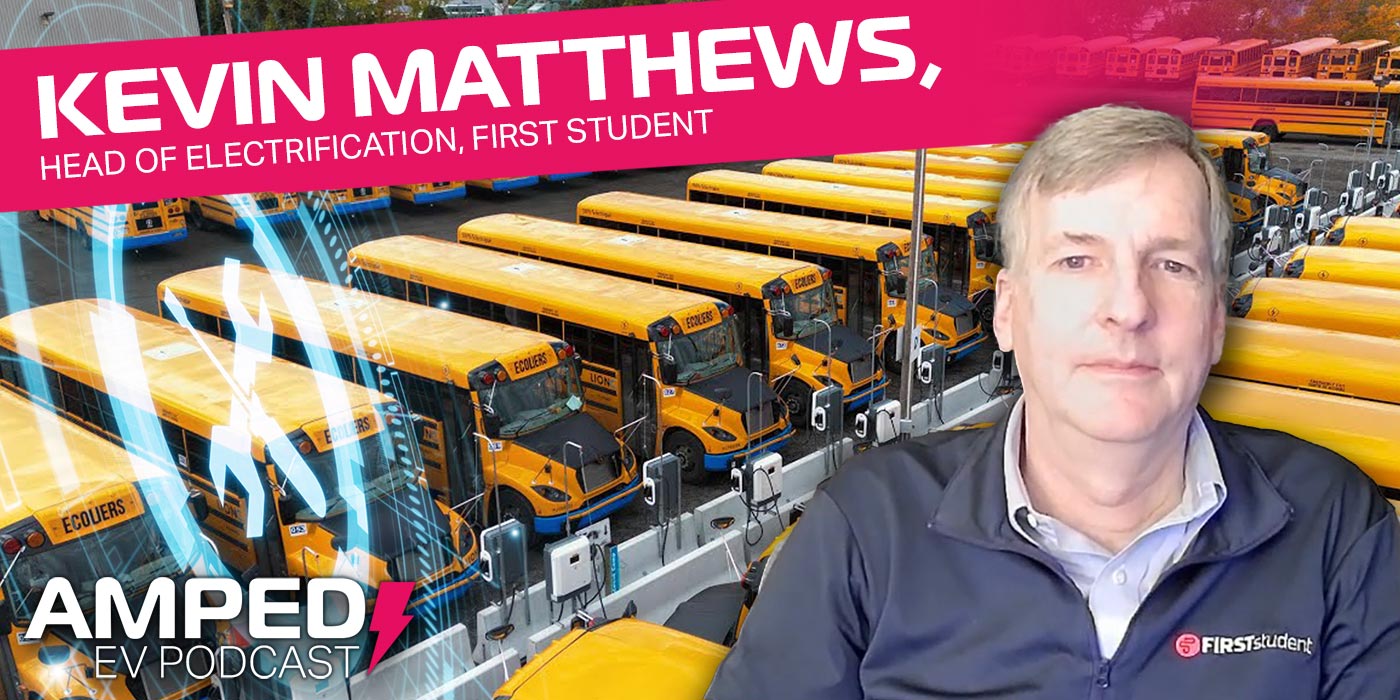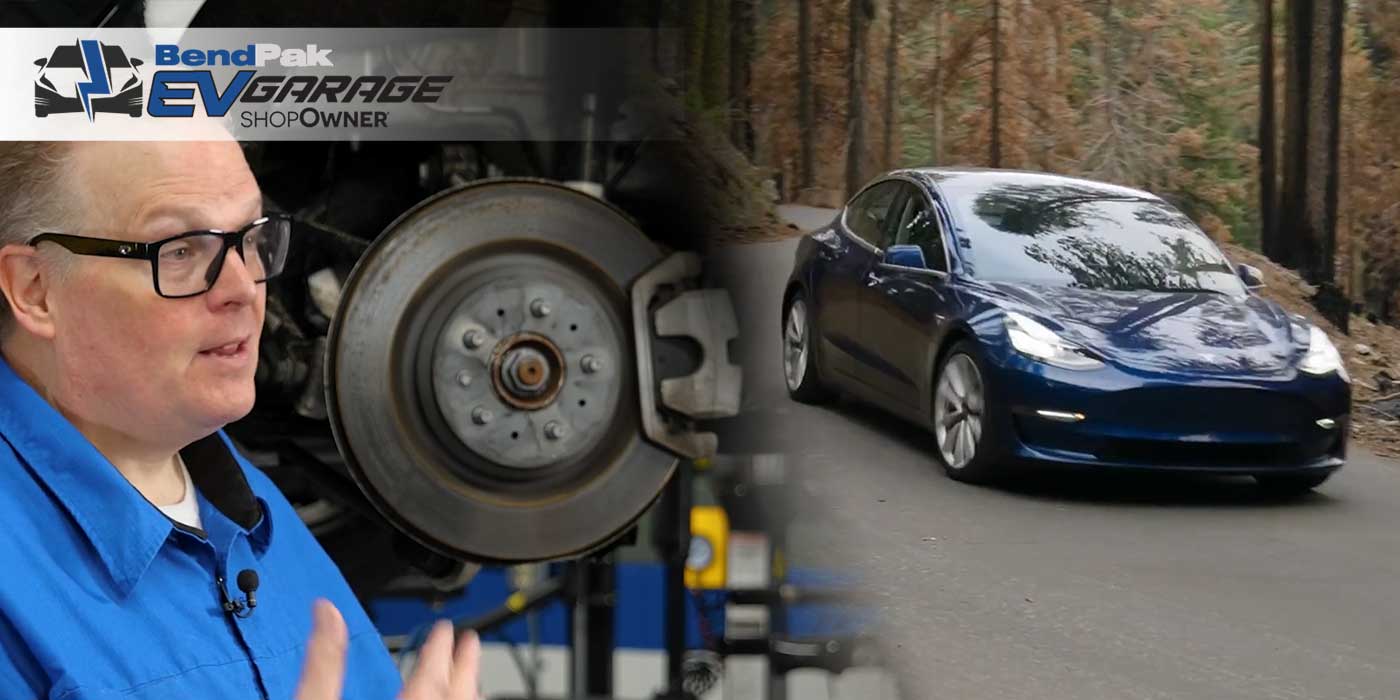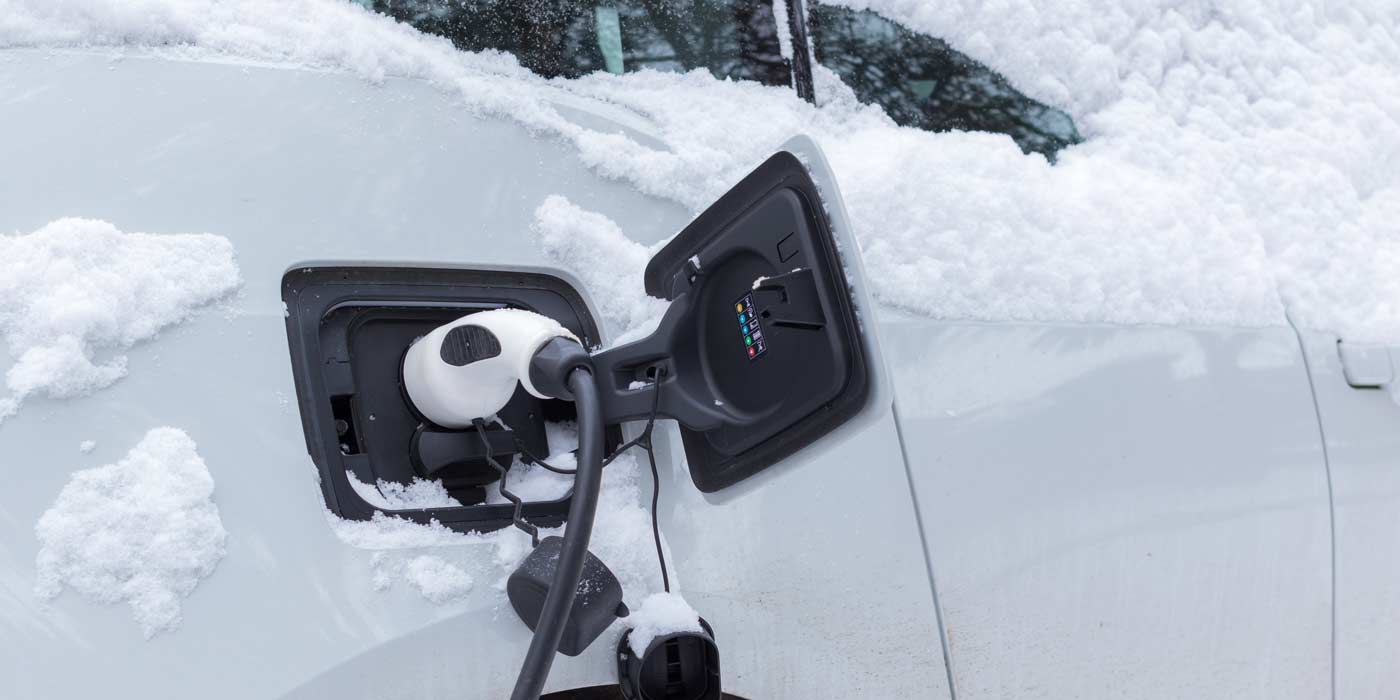Renting a car can be tricky for reasons you might not expect. If you don’t own a car, it can be hard getting used to remembering your keys or being mindful of where you parked. Even if you do own a car, you don’t own THIS car, and working all the new gizmos and gadgets can be just as challenging as navigating the open road.
UFODrive, a car rental company that began in Europe in 2018, saw these challenges and found a way to turn them into advantages in the marketplace. The key, according to the company’s Chief Commercial Officer Edmund Read, was to turn to EVs. Today, the company has an established presence in Europe and is growing steadily in the U.S., and nearly exclusively rents EVs to its customers.
“What we are able to do for customers today using modern EV platforms is way beyond what you can do with a normal ICE vehicle,” Read says. “We monitor people’s charge level. If you go below a certain level, we will engage to make sure you’re aware of that. We’ll also help book you into the nearest charge point. And then my favorite one, which happens nearly every day is, somebody returns the car, they plug it back in, they close their contract, the car locks and they walk away, but an hour later they’re having lunch and they think, ‘Ah, I’ve left my wallet or my shades or my passport or my shoes in the car.’ They can text us and we can pop the trunk and let them back into the car to find the bits that they need.”
On this episode of The Amped EV Podcast, Read joins us to walk us through how electrification is allowing the rental industry to turn expectations on its head. We discuss the perks EVs have unlocked in the car rental industry, how partnerships with rideshare companies like Uber are driving overall EV adoption, and the most promising EV technologies coming down the pike.
Want more of The Amped EV Podcast? Click here.
Here’s a transcript of the show:
David Sickels: Hello and welcome back to the Amped EV podcast. My name is David, I am the editor of The Buzz.
Nadine Battah: And I’m Nadine, and I’m the editor of Tech Shop Magazine.
David Sickels: Today we have a fun car rental guest. We’re talking about car rental. And you might wonder, what’s that have to do with EVs? The name of the company is UFODrive and its specialization is in renting EVs to people. People can do long-term rentals, short-term rentals, whatever they might be looking for.
Nadine Battah: Very nice, business or leisure.
David Sickels: Yeah, exactly. And this is kind of a new sort of niche that is popping up in the EV space because there are efficiencies to be had on behalf of UFODrive, where they can make it much easier on their end to take care of these vehicles, thus take care of the customer. They can maybe provide more for the customer that other companies might not be able to do so well. So I’m really interested to kind of dive into what exactly that model is.
Nadine Battah: Me too. Let’s get started.
David Sickels: We are talking with Chief Commercial Officer Edmund Read from UFODrive. Let’s get to it. Edmund, thank you so much for joining us today. First of all, can you tell me about the name? Where did that name come from? I love the name.
Edmund Read: Really it comes down to our sort of goal to try and be the best rental experience that you can ever have. Partly it was, obviously, when we started the business four years ago, we were dropping some types of vehicles that people weren’t used to. So the first time anyone, in most cases, it would be the first time anyone had ever seen or interacted with a Tesla. So it was a little bit like putting people in front of a UFO. But more importantly, the goal of the business was to create an out-of-this-world experience for every customer. And so therefore UFO is the right name for us.
David Sickels: That is fantastic. So, Edmund, I understand the company began in 2018. How has the company kind of evolved since then?
Edmund Read: So, we started in 2018 with the goal of digitizing rental and then being the first platform for electric vehicle rentals. So, very early days at the time, which was seen as sort of craziness to go EV first. The first evolution was within Europe of building up our first sort of small hubs, where we effectively deploy cars into city centers. We then got our first airport locations, which allowed us to operate at a slightly larger scale and then we grew more sites within Europe. And that’s also then when we started our first sort of B2B partnership where we used the same platform and worked with larger businesses to help them with their EV transition projects.
David Sickels: Excellent. And who tends to be your kind of typical customer? Is it people, they want to try an EV for the first time maybe, or they’re looking to be just more sustainable in renting a car? Who tends to go to you?
Edmund Read: In the beginning, it was very much people looking to try out an EV. So they were very new products. They were relatively thin on the ground. And so we had a lot of people who were thinking about buying an EV in the first couple of years and then they would come to us to try that. We actually have somewhat informal relationships with some of the main manufacturers where they will recommend us to their customers to go and try us out for a week or two if somebody wants to do a long-term rental. So we definitely started there. We also then had a big sort of enthusiast crowd here, a lot of people who are very keen on the EV industry and its progression of it. And they were sort of keen regular users upfront. And then in the last two years, that’s really morphed into a real mix of leisure and business travelers.
So, we get some people who travel across multiple cities. If you look at our footprint, you can see a kind of business link there. So between places like Luxembourg, London, San Francisco and so on, we get a lot of customers who travel to all of those cities and they’re there for business. And then we get more and more leisure travelers now, so we get people who are coming into different cities, they’re going on holiday. I think we’ve done in excess of 20 million miles to date. And we cover most of the major tourist driving routes in California and places like that, and then in addition to main hubs and cities.
And, increasingly, we see in U.S. cities and in our European cities, we see more people who are effectively looking for an alternative to car ownership. So we see people who will take us for a month. We have a subscription product in many of our markets as well. So we see a lot more long-term rentals where we will see people in California and even Los Angeles, which surprised us a little bit. We have quite a large group of customers who will rent for up to two to three months at a time. And when we talk to them they say it’s because they’re not really ready to commit to having a vehicle full-time, they may be moving somewhere at some point. So for them, it’s much easier to be able to have a vehicle for that period.
David Sickels: Interesting. How many cities are you in the U.S.?
Edmund Read: So, we’ve got 10 cities and 12 locations today. And then we’ll have a couple more cities and a couple more locations in the next month as well.
David Sickels: Oh nice.
Nadine Battah: That’s very interesting. Now, how do you ensure your EVs are always ready for the customer when they need one? For example, do you own your own vehicles and charging infrastructures in areas where you operate?
Edmund Read: So, in the U.S. today, we lease most of our vehicles. So we work with a company called Inspiration. They work with a lot of companies including Revel and others to help them fund their leasing programs for electric vehicles. And then this is kind of where the beauty is of it, and it’s difficult really for people to see until you see the numbers is, our operating model is wildly more efficient than traditional car rental. And so when a car comes back in, what happens, and this happens between every rental, the car is returned, the only thing that will happen is a cleaning company, a crew will come in and they will do a clean on that car and usually it’s a dry cleaning of the car in the location. They will be automatically notified as soon as the car comes back in. They have a kind of lead time to come in and do that and everything is tracked and then the car needs to charge.
And, in most cases, the car will charge in its parking space. So you return, you plug the car back in and the only additional thing that needs to happen is for the cleaning to be done. So relative to other models where the car needs to move, you need to fill it up, you need to do multiple things and so on, it’s very, very efficient. And so we look after all of that and then it’s traditionally we would install our own charging infrastructure, that gives us kind of peace of mind, allows us to ensure that we can keep all of the vehicles charged up and so on. But increasingly today, we see more and more charge deployment happening in parking garages, other locations and so on. So we tend to participate in that kind of build with the owners of the property where we say, “Right, we’ll jointly invest in the charging infrastructure and then we will lease some of those spaces with charging for a period of time.” And so it’s evolved a little bit as the infrastructure grows.
Nadine Battah: Very nice. And you mentioned that operating model, could you use the same business model with all ICE vehicles?
Edmund Read: On the one hand, we are reluctant to do it, right? We build the whole model for well… And let me give you two reasons. So from a customer experience perspective, what we are able to do for customers today using modern EV platforms is way beyond what you can do with a normal ICE vehicle. And that’s a key part of our whole proposition. It’s what drives the insane amount of loyalty that we get from our customers. Obviously, we monitor people’s charge level and if you go down below a certain level, we will engage to make sure you’re aware of that. We’ll also help book you into the nearest charge point, things like this.
And then my favorite one, which happens nearly every day is, somebody returns the car, they plug it back in, they close their contract, the car locks and they walk away. An hour later, they’re having lunch and they think, “Ah, I’ve left my wallet or my shades or my passport or my shoes in the car.” And they text us and we can effectively pop the trunk and let them back into the car to find the bits that they need. And the other one we do regularly is people forget where they parked the car. We had someone at Disney two weeks ago, he said he came out, he couldn’t remember at all where it was and we’re able to effectively beat the horn for them so that they can find the car.
David Sickels: I love that.
Edmund Read: This is where the out-of-this-world experience really, really exists. It’s very difficult for us to replicate that with ICE vehicles. So we are reticent always because we want to be able to offer the same service. Now we understand there are a lot of businesses that are kind of in a transition phase. So we are working actively and we do have today, situations where we run both. We can have someone with an EV and with some ICE vehicles, but our main goal is to show everyone is that ultimately, you are transitioning away, because it’s a whole different world.
Nadine Battah: Definitely sounds like you guys were taking care of your customers. You say you’re the world’s highest-rated car rental. What’s your secret to all the great reviews?
Edmund Read: Well, I think it comes down to what we just talked about. So there are two things I think that really impress people first. So first thing is that it’s a completely digital experience and it should’ve been like that a long time ago, but it’s a very legacy business based around counters and lines and things like this. And then, in our industry we completely digitize that. So you can sit at home, you can make your booking, you can do your registration, submit your documents, you could effectively make a booking, be registered and then drive away in under five minutes. That’s always our goal. So that’s a huge convenience factor for a lot of people. It allows us to operate 24/7 as well, so you can pick up a car anytime you want. Those are really nice. They do a lot. And then the really important part is the moment you’ve actually got into your car and you’re driving, we have 24/7 access to people who can help you do a crazy number of things that no rental company’s ever been able to do before for their customers.
That’s what I think really sets us apart. It’s those weird things that happen at one o’clock in the morning, anything from losing your car, to leaving your shoes. We had some people who were on their way to Yosemite and then they’d taken the wrong route that doesn’t have the charge on it and they got too far down and they’d missed our first sort of attempt to call them. And they were getting really worried. They had three kids in the car, they didn’t know what to do. We were able to guide them to the nearest destination charger to get them charged up so they can move on. It’s that level of peace of mind, really, really sets us apart.
David Sickels: Wow, yeah, that’s a really cool just kind of network that I feel like you’ve built for people to tap into with that kind of thing. So I wanted to ask you, your CEO, Aidan McClean, he has a book called, “Electric Revolution.” In that book, he dives into some of maybe the most promising EV-related technology out there and then also some of the most overrated. And I was wondering if I could get your hot take on what you think is some of the most promising and maybe some of the most overrated.
Edmund Read: So as a diplomat by nature compared to the author of the book, I would probably be less aggressive. I think rather than going to specifics, I think on the technology, I think the most important part for me would be that transition subject that we talked about before. So a big part of our business in the last 18 months is the platform that we’ve built that allows us to manage our fleet and do all of our work. We effectively license that as a SaaS platform to larger businesses. Hertz, we have projects with Hertz and Uber, the biggest online retailer whose name I won’t mention and others that we work with. And it’s in those projects that I think I would say less pinpointing a specific technology as being overrated.
We are kind of in that phase where a lot of people are trying to go through a transition where they want to move gently from having ICE vehicles to EVs, yet they understand it’s a completely different proposition. And I think what for me is widely overrated and we see it in a lot of businesses is, this desire to have one foot in both of those camps and how that is actually slowing down a lot of people’s transition.
So, I think I wouldn’t dis anybody’s specific projects, I think it’s still a very highly fragmented market. The bits that are important to us, like charging infrastructure and things like this, super, super fragmented still. Tesla wins on that because of how easily accessible it is and so on. We think about it from a customer perspective, things that have not been solved yet effectively are, it’s the most advanced electric… Yeah, my early background was in cell phones when there was a transition from phones with keypads to platforms like Android and Apple. And I see a very similar situation here where it’s the most advanced vehicle platform that you can have and yet you can’t just roll up to a charger and plug it in and charge with it knowing who your car is and what your account is. You can with Tesla, but you can’t easily with everyone else. And there are all these little points of massive fragmentation that really need to be resolved to simplify the customer experience. All the technology is there, all the capability’s there, but it’s still not come.
Nadine Battah: So, you briefly mentioned your partnership with Hertz. Can you explain to us a little bit how that works and do you have any other partnerships that are enhancing the way you guys do business?
Edmund Read: Yes. So without giving too much detail, Hertz are one of our main investors. So they were a big part of our Series 8, which was early last year. So they’re a strategic partner in that sense as an investor in the business. And then they’re also one of our major clients for our platform as a SaaS product. And we are working with them across a number of different projects, some of which, well I guess to your question, all of which are great learning opportunities for us and allow us to really expand our platform and offer more. So we have car-sharing projects running with them. Most exciting one is where we’re working very closely with them in the project where they are renting cars to Uber drivers. So they’ve got thousands of vehicles deployed across the states and they’ve just started that program in Europe.
And, they’re using our technology to manage that better so that you as an Uber driver are able to make your booking. We manage the experience just as we do today for our customers and then slowly try and pull them away from the traditional kind of counter base model of nine-to-five operation to be fully digital. So we work with Hertz, we learn a lot on that, especially as Uber drivers very different types of drivers, their driver behavior, the way they treat the vehicle, their charging requirements, all very different. And so we’ve done hundreds of thousands of miles with them. So that allows us to really learn a little bit more about how we can manage the different types of customers. We have a Last Mile Delivery pilot running at the moment, which allows us, again, in a completely different model, where you’re looking at vehicles that people are coming and taking for an hour, for a few hours, maybe for an afternoon, to do some package drops and so on.
Very, very different profiles, different sorts of requirements for identity validation and things like this. Yeah, we’ve got a lot and we are very lucky at the moment that we’re working with, well the biggest name in rental, the biggest name in ride-share, the biggest name in kind of retail and Last Mile, two of the EV OEMs manufacturers who we’re working on projects with as well. And so we’ve got loads of that going on and each time that sort of allows us to bring a little bit more back to our customers at UFODrive. And then it also allows us to really cement that unique position we’re in with our platform, where we’ve built the hit it was the first EV native, sort of fleet management platform, which allows you to manage everything from your retail, your drivers, your vehicle operations, sort of base operations, your energy operations, all of that’s built into a single platform which nobody else has done.
It’s in many cases, almost plug-and-play. And the important part here is that the EV is baked through it. And so whether it’s a customer service interaction, whether it’s some backend process automation or whether it’s your energy charging and requirements, all of it is built through end-to-end and that really, really sets us apart versus a traditional sort of ICE fleet management platform.
David Sickels: Interesting. Well when you mentioned the Last Mile Delivery platform, I think that’s really interesting. For that kind of thing, are you lending out eTransits or something bigger for these people to use?
Edmund Read: A mix of vehicles today and that’s one of the pilots where we do actually have a mix of EV and ICE vehicles going out. And so you’ve got some older delivery vans and then they’ve got Transit and I think they’ve got a few others that they’re bringing in to deploy as well. And in that case, they’re not our vehicles. We are the management platform in between, where we manage effectively, the booking, the operations process, the driver validation and things like that.
David Sickels: Got it. Well Edmund, thank you so much for joining us today. This was really fun.
Edmund Read: You’re welcome. It was a pleasure, thank you very much for having us, guys.
David Sickels: Absolutely. Take care.
Nadine Battah: That was great. That was a lot to unpack. Great information.
David Sickels: Yeah, for sure. What’d you take away?
Nadine Battah: Honestly, I just really enjoy the fact how much the company is taking care of its clientele. It feels like they’re making it easy and accessible to rent out these vehicles, test it out, see if it’s for them and they’re always there for them. So I really appreciate just how they’re a part of the process, not just before they booked the car, but afterward and throughout that process they’re there to help.
David Sickels: Right. Edmund mentioned in Yosemite some people were lost, they got on the wrong track and they’re worried, “Oh no,” range anxiety is coming on and they were able to direct them to the right route, so that was really cool, the fact that they can remotely open and close the car doors, super interesting. Their model, I really appreciate their model. They’re installing their own infrastructure for the most part. They’re able to just make the whole process more efficient than maybe they’d be able to do if they were leasing only ICE vehicles. And I think they’re really onto something here and not only that, but people. As he mentioned, are still kind of getting into this like, “Is this something for me? Do I really want to invest?”
Nadine Battah: It’s a perfect opportunity for somebody to actually test it out, see if it is for them, and move forward from there. And as you said, you have the option to do a long-term rental or a short-term rental. So I think the options that are provided are great for somebody whose still kind of trying to figure out whether or not this is a hole that they want to get into or not.
David Sickels: Exactly. It’s really cool. I enjoyed it.
Nadine Battah: Thanks for having me again, David, I really enjoyed it.






